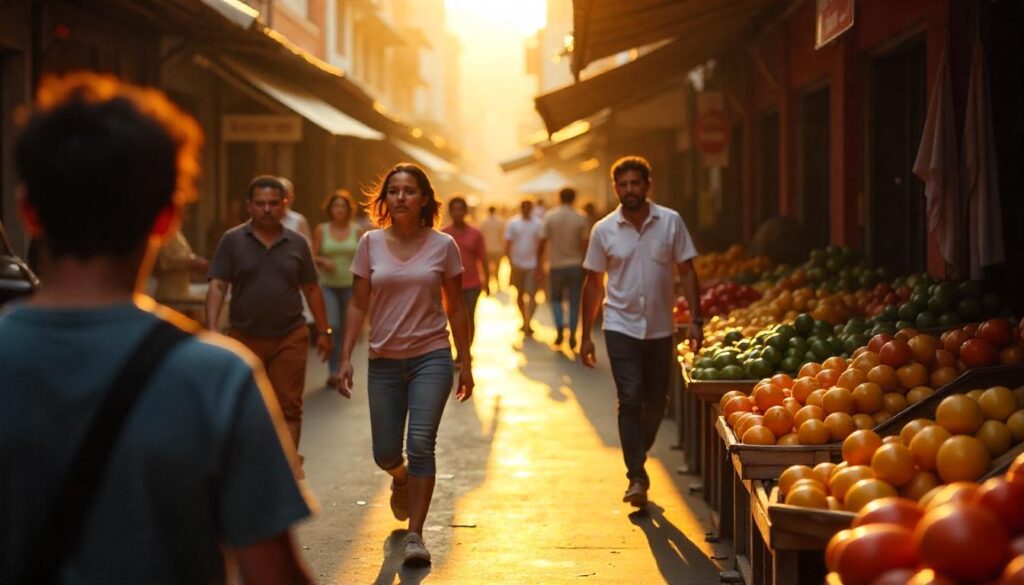Introduction
Colombia is a country that surprises and captivates at every turn. Often misunderstood due to its turbulent past, Colombia has emerged as one of South America’s most exciting and culturally rich nations. With stunning natural landscapes, from the Amazon jungle to the Andes mountains and Caribbean beaches, Colombia is a land of incredible diversity. But beyond its scenery lies a nation filled with energy, creativity, and resilience. Its people, traditions, and evolving story make Colombia more than just a travel destination — they make it a symbol of transformation and hope. This article explores the heart of Colombia: its geography, culture, history, economy, and future potential.
Colombia: A Vibrant Land of Culture, Nature, and Resilience
Colombia, located in the northwest corner of South America, is a country known for its breathtaking landscapes, rich cultural heritage, and a spirit of resilience that has carried it through decades of challenges. From the towering peaks of the Andes to the lush Amazon rainforest, from Caribbean beaches to vast plains, Colombia’s geography is as diverse as its people. This diversity shapes the country’s identity, making it a fascinating place with a complex history and an exciting future.
Geography and Natura l Beauty
Colombia is uniquely positioned with coastlines on both the Pacific Ocean and the Caribbean Sea, making it a vital connection point between the Americas. Its terrain varies dramatically, featuring snow-capped mountains, tropical jungles, deserts, and fertile valleys. The Andes mountain range, running north to south, splits into three branches in Colombia — the Western, Central, and Eastern Cordilleras — creating varied climates and ecosystems. The Amazon rainforest covers the southeastern part of the country, one of the most biodiverse regions on Earth.
The country’s biodiversity is remarkable. Colombia ranks as one of the most biodiverse nations globally, hosting thousands of plant and animal species, many of which are endemic. This incredible wealth of nature attracts scientists, ecotourists, and adventure seekers alike.
Culture and People
Colombia’s culture is a vibrant blend of indigenous, African, and Spanish influences, creating a rich mosaic of traditions, music, dance, and cuisine. Its people, known as Colombians, are renowned for their warmth and hospitality. The country celebrates numerous festivals throughout the year, including the Barranquilla Carnival, which is one of the biggest and most colorful carnivals in the world, showcasing traditional music, dance, and costumes.
Music is a central part of Colombian life. Genres such as cumbia and vallenato originated here, and modern Colombian artists like Shakira and J Balvin have taken Colombian rhythms to the global stage. The country’s literary scene is also notable, with Nobel Prize winner Gabriel García Márquez, a native of Colombia, bringing magical realism to literature and putting Colombia on the world literary map.
History and Resilience
Colombia’s history is marked by complexity. Before Spanish colonization, the region was inhabited by numerous indigenous groups such as the Muisca, Quimbaya, and Tairona, each with their own unique cultures and social systems. Spanish conquistadors arrived in the early 16th century, establishing colonial rule that lasted nearly 300 years. Colombia gained independence in 1819 under the leadership of Simón Bolívar, becoming part of Gran Colombia, which later dissolved into modern-day Colombia, Venezuela, Ecuador, and Panama.
The 20th century brought both progress and challenges. Colombia faced periods of political instability, civil conflict, and violence linked to drug cartels and guerrilla warfare. Despite these hardships, Colombians have shown extraordinary resilience and determination to build peace and progress. The recent decades have seen significant improvements in security and economic development, making Colombia a growing player in Latin America.
Economy and Innovation
Colombia has one of the largest economies in South America, with a diverse portfolio including agriculture, mining, manufacturing, and services. Coffee, known as one of the world’s finest, is Colombia’s most famous export. The “Coffee Triangle” region is a UNESCO World Heritage site and a tourist attraction itself, where visitors can learn about coffee production and enjoy stunning landscapes.
Besides coffee, Colombia produces emeralds, flowers, coal, and oil. The country has been investing heavily in infrastructure, technology, and education to foster innovation and entrepreneurship. Cities like Bogotá, Medellín, and Cali are emerging as hubs for startups and tech companies, positioning Colombia as a future leader in Latin American innovation.
Tourism and Attractions
Tourism in Colombia has surged in recent years, as the country sheds old stereotypes and welcomes visitors with open arms. Tourists can explore colonial towns like Cartagena, with its preserved walls and colorful streets; wander the historic streets of Bogotá’s La Candelaria district; or hike to the Lost City, an ancient indigenous archaeological site hidden in the Sierra Nevada mountains.
Nature lovers can visit Tayrona National Park on the Caribbean coast, home to pristine beaches and diverse wildlife, or explore the Cocora Valley with its towering wax palm trees, Colombia’s national tree. The country’s diverse climates allow for a wide range of activities, from skiing in the Andes to snorkeling in the warm Caribbean waters.
Challenges and the Road Ahead
Despite its many strengths, Colombia still faces significant challenges. Social inequality, rural poverty, and the ongoing effects of past conflicts require continued attention. The peace process with guerrilla groups has made progress but remains fragile, and efforts to integrate former combatants into society are ongoing.
Environmental concerns also weigh heavily on the country, with deforestation, mining impacts, and threats to biodiversity needing sustainable solutions. However, Colombia’s commitment to environmental conservation and social development gives hope for a balanced future.
Conclusion
Colombia is a nation of contrasts—rich in culture and nature, shaped by a complex history, yet brimming with hope and potential. Its landscapes captivate the imagination, its people inspire with their resilience and creativity, and its future looks promising as it embraces peace, innovation, and sustainability. For anyone curious about South America, Colombia offers a journey full of discovery, vibrant experiences, and heartfelt warmth.


